19th C Thuya Wood, Boulle Style Marquetry Jewelry Box with Key
19th C Thuya Wood, Boulle Style Marquetry Jewelry Box with Key
Impossible de charger la disponibilité du service de retrait
Partager

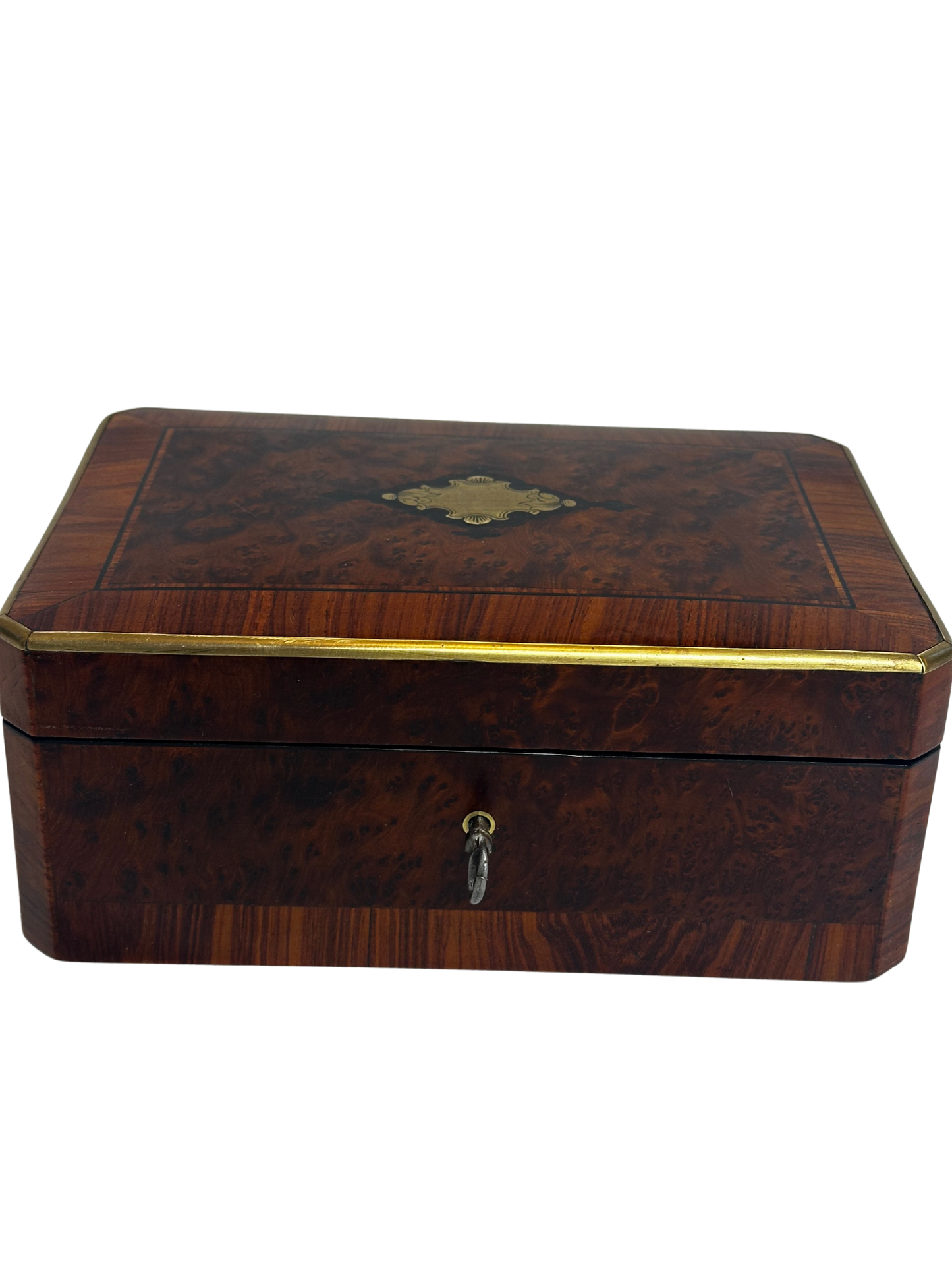
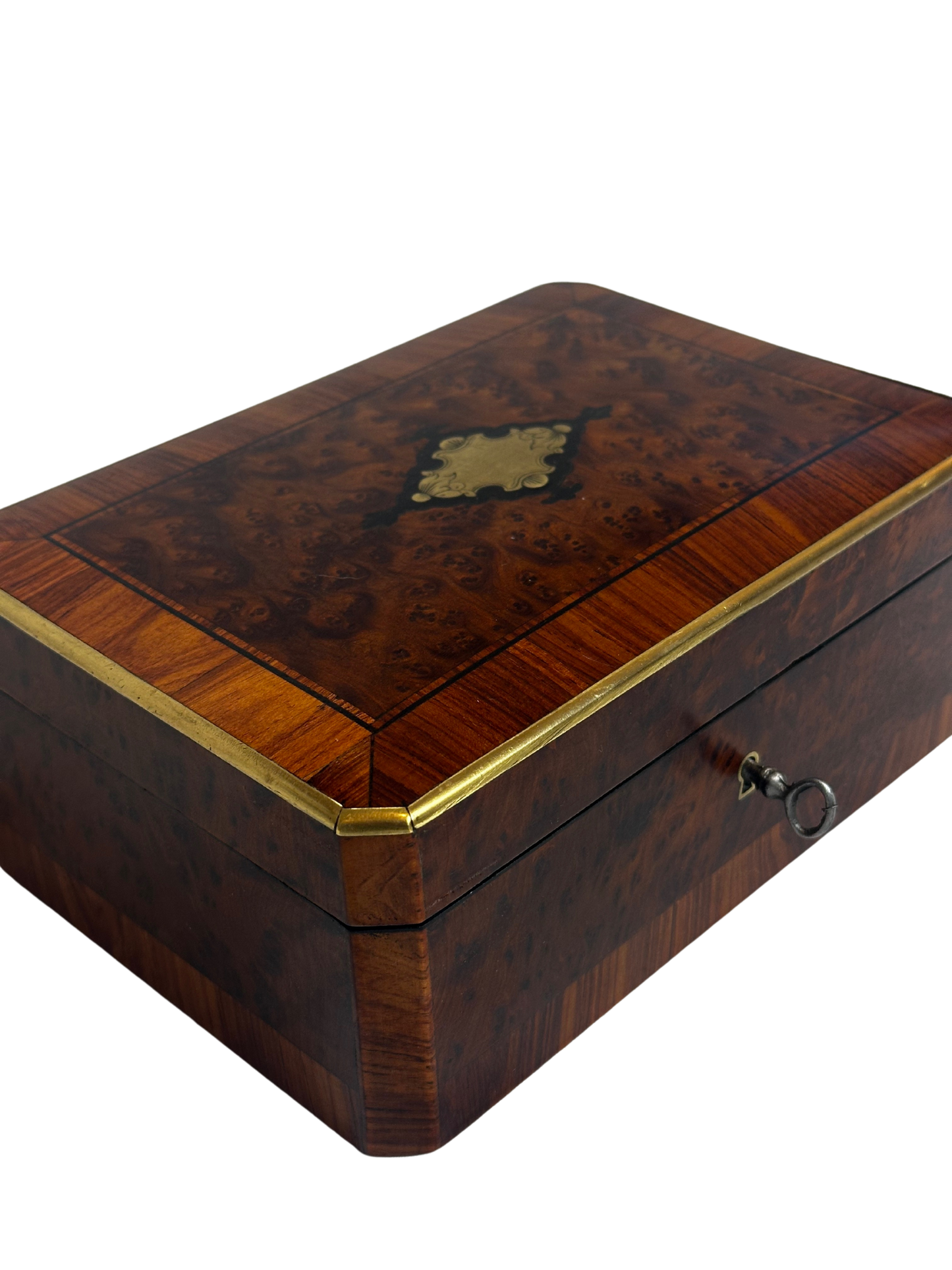
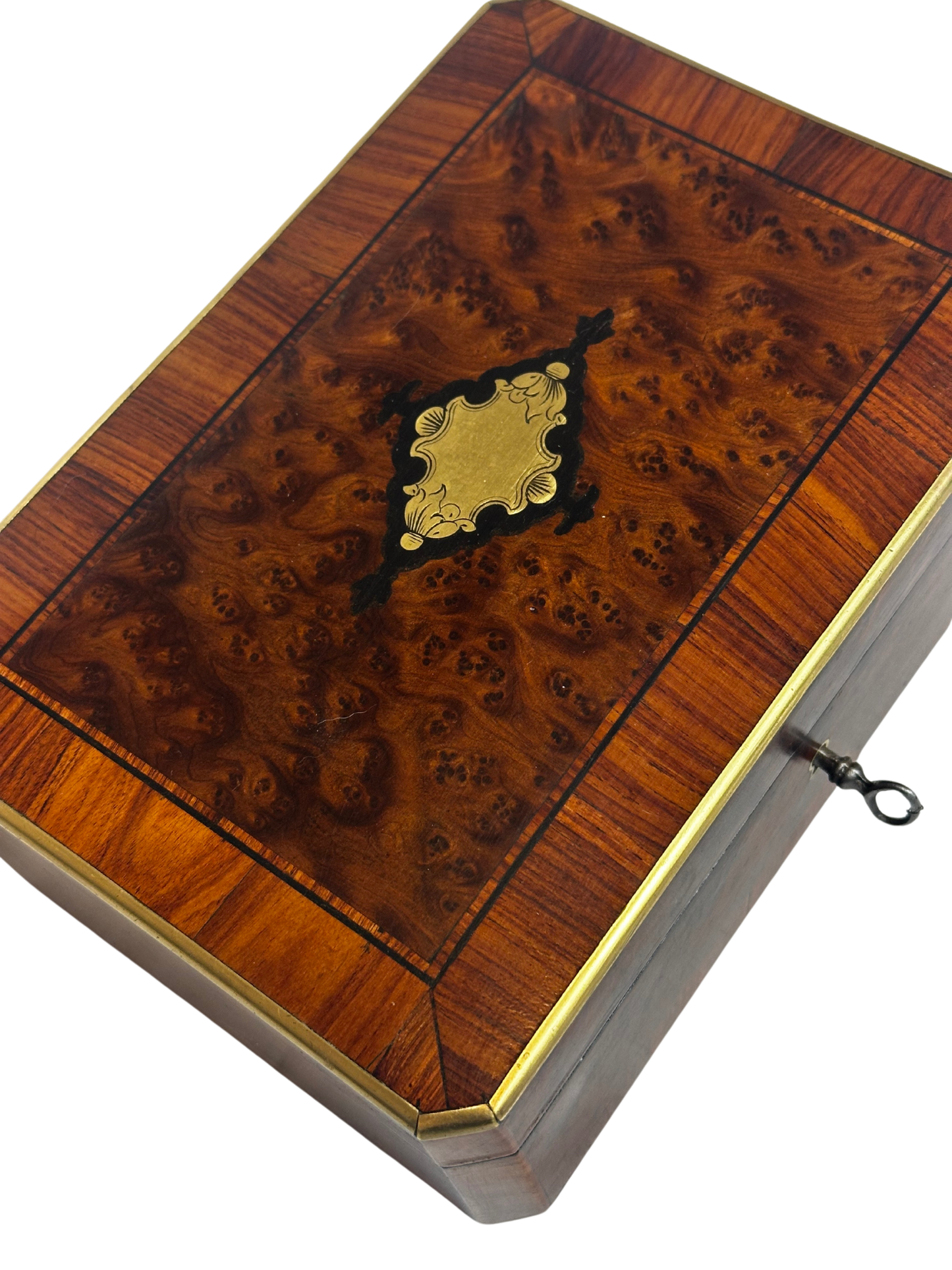
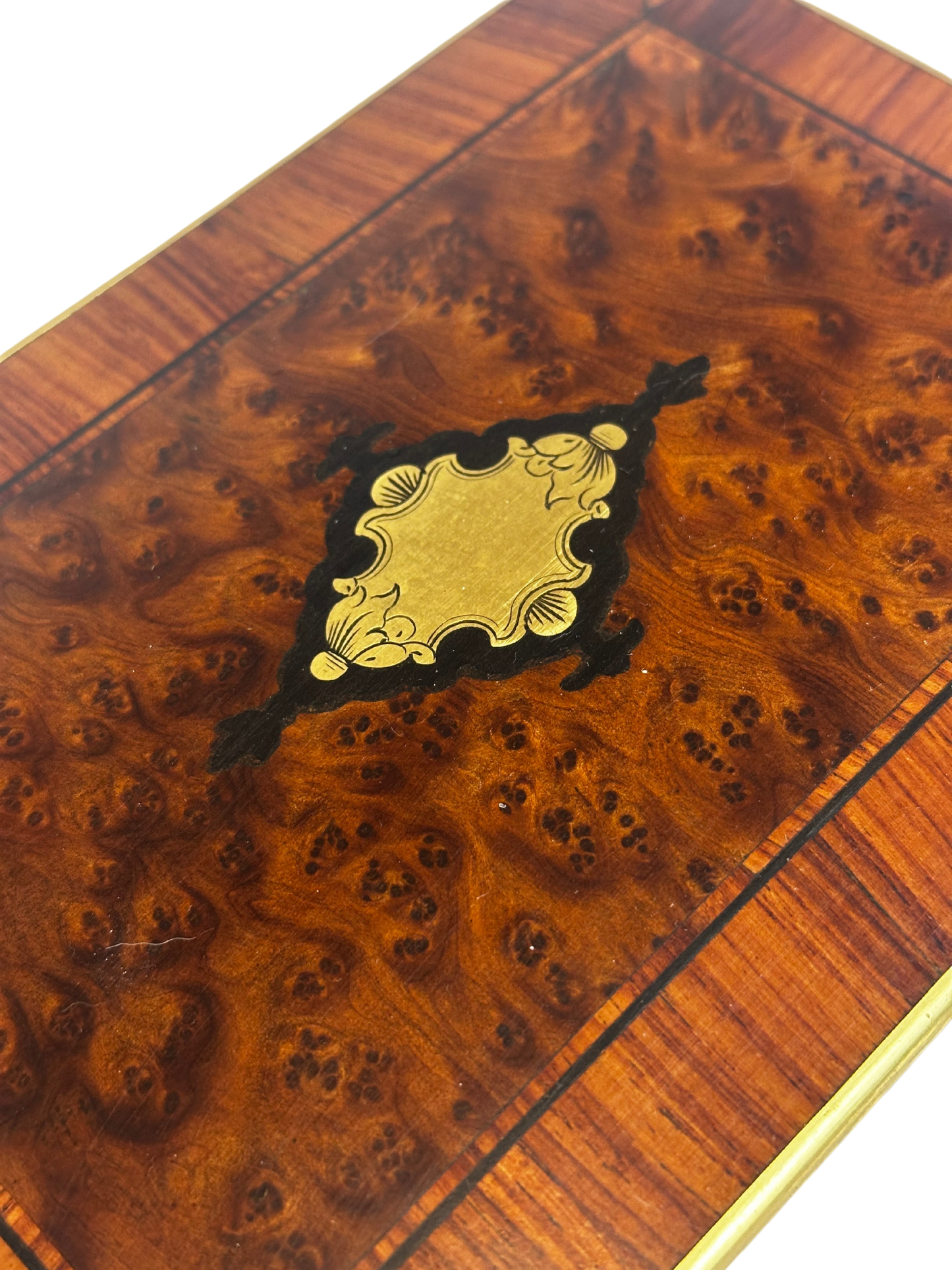
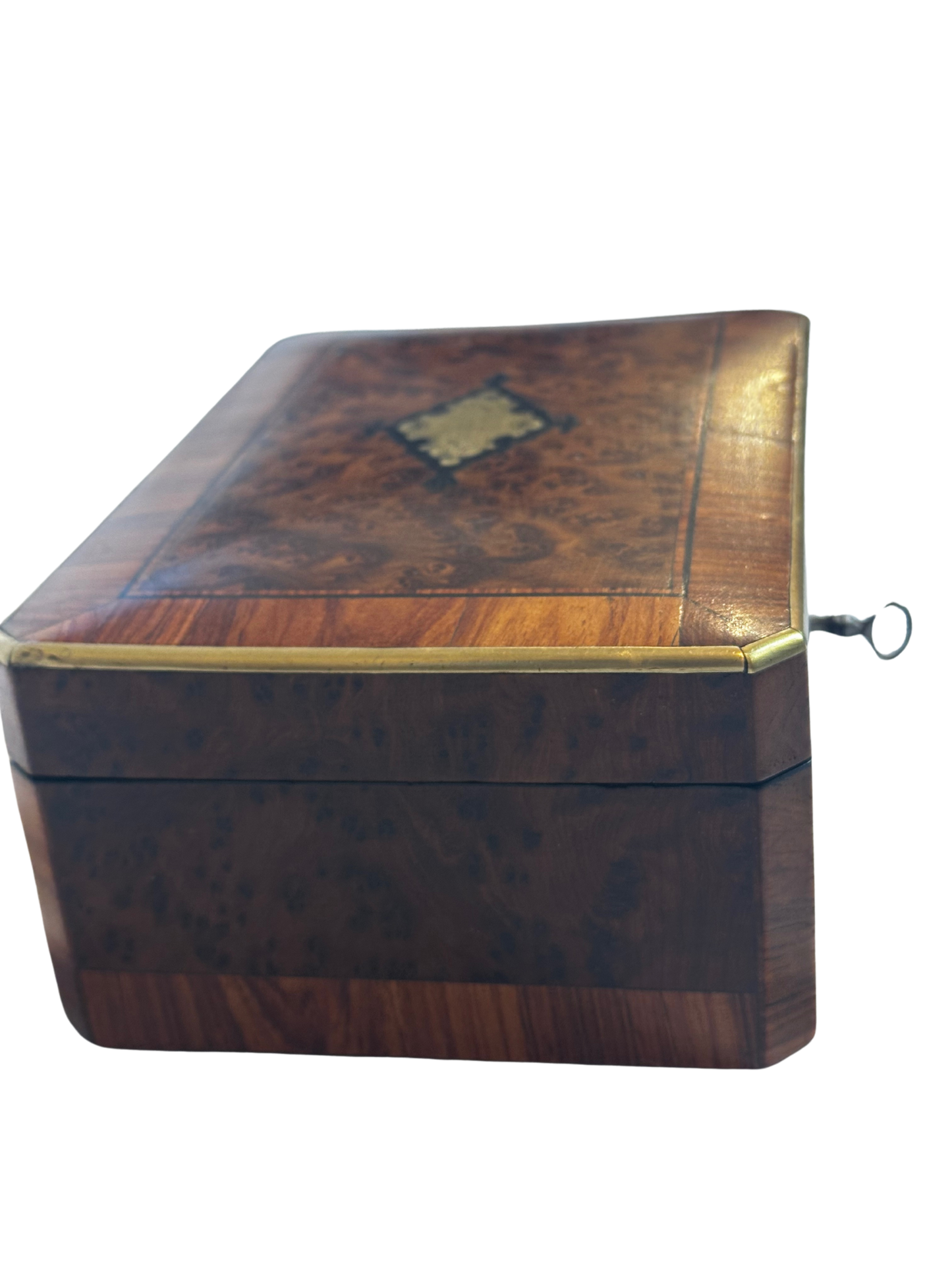
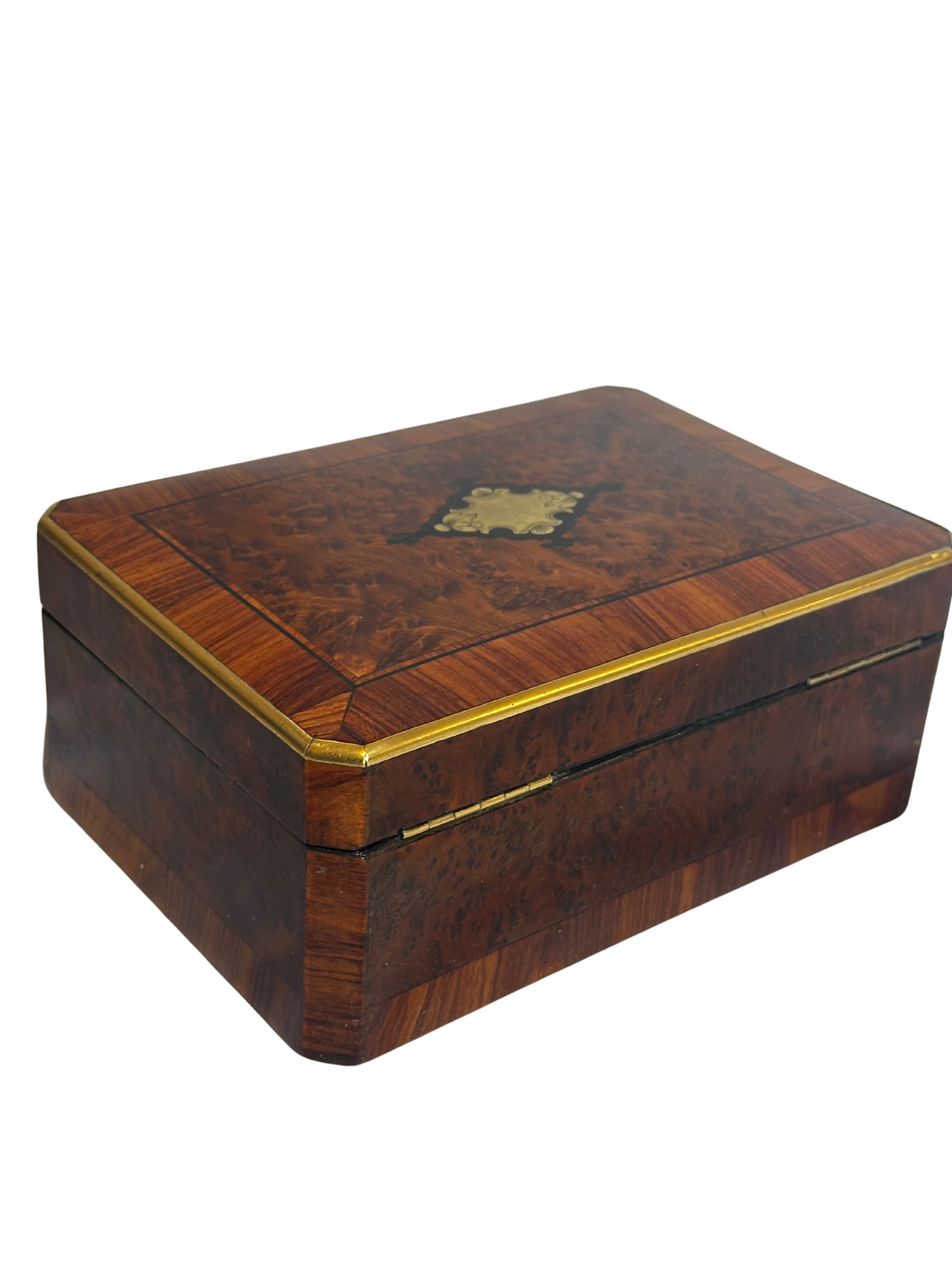
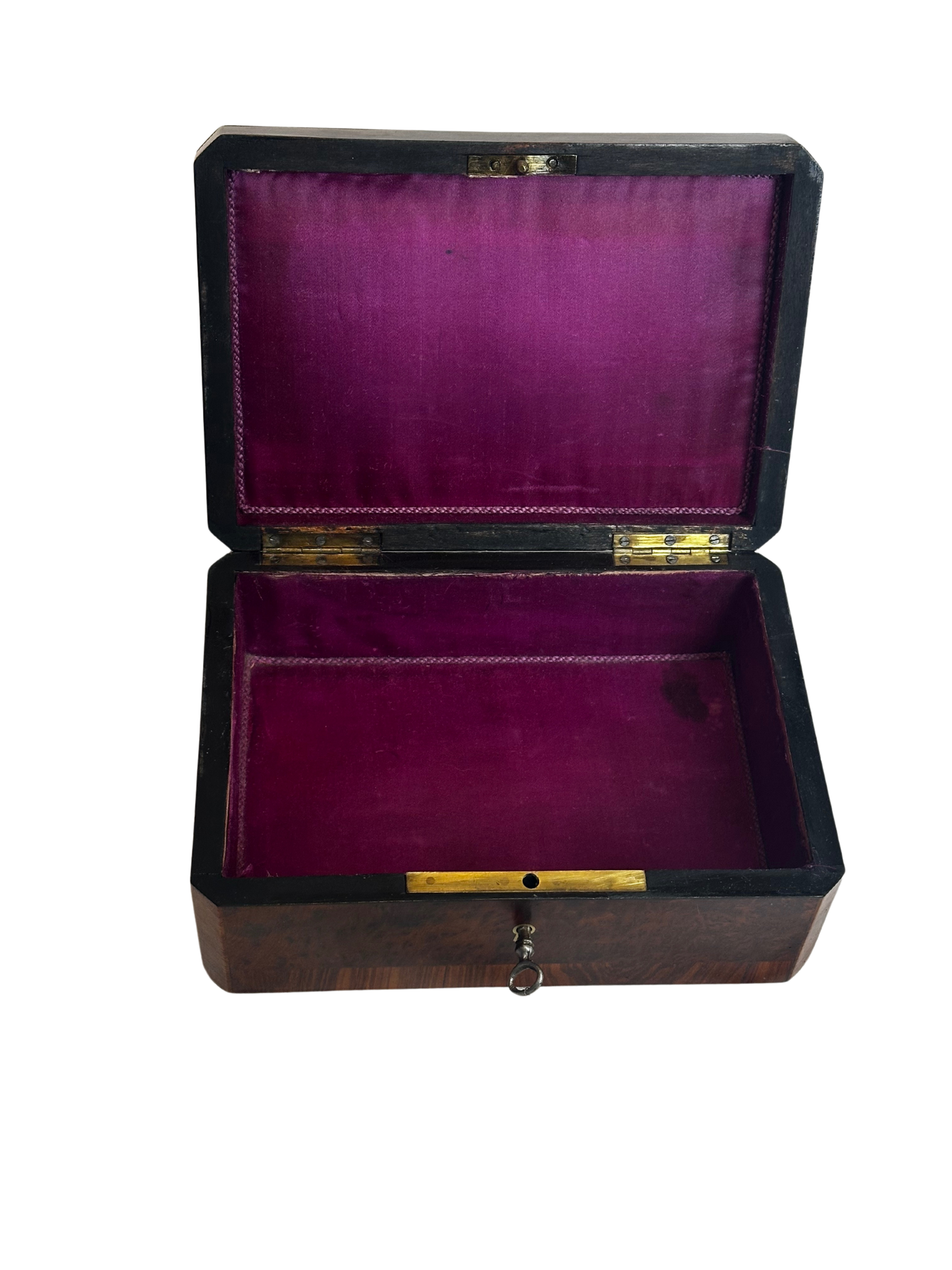
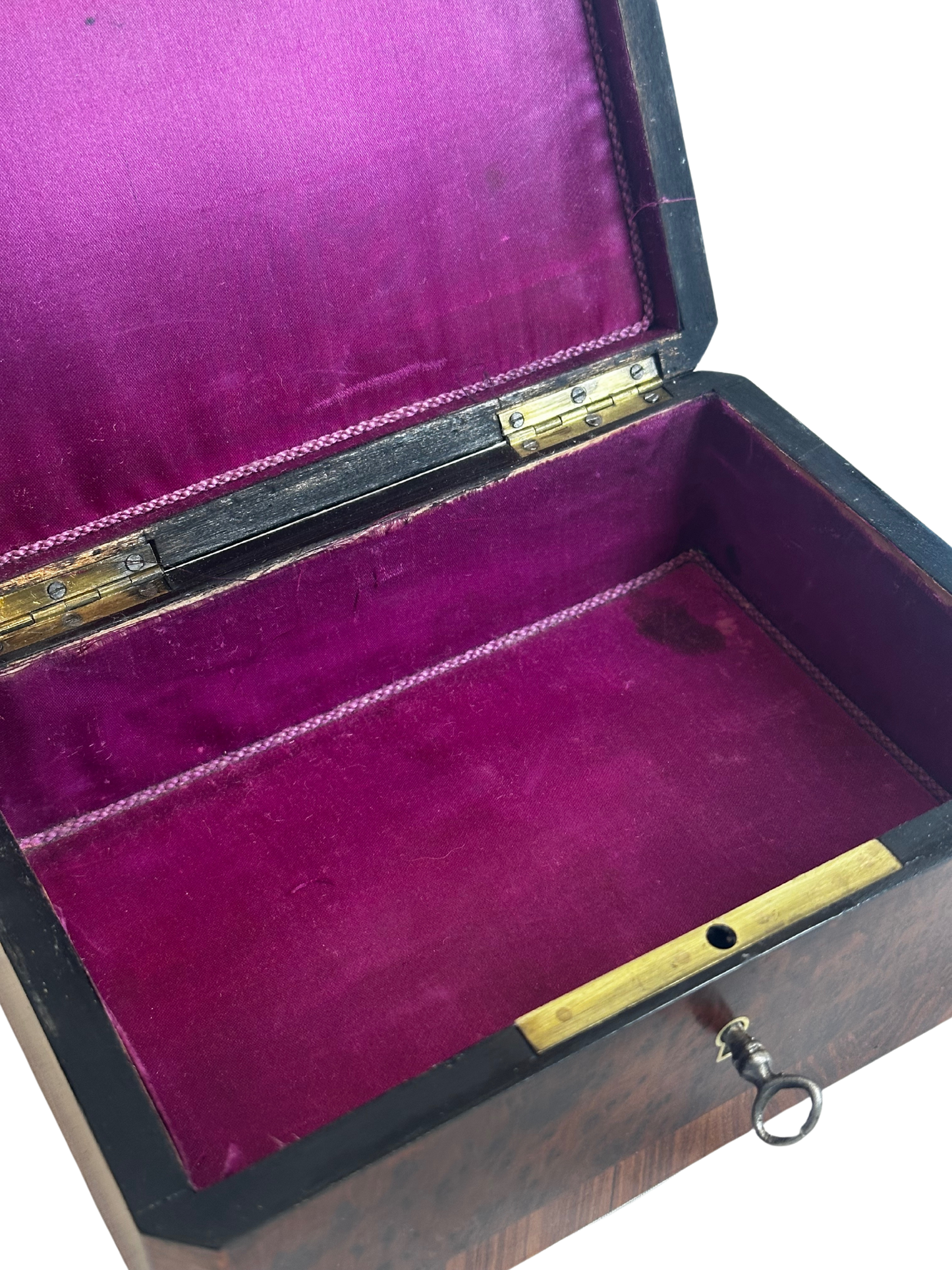
19th C Thuya Wood, Boulle Style Marquetry Jewelry Box with Working Key.
Interior is lined with purple/pink silk. Exterior is in excellent condition.
19th C Thuya Wood, Boulle Style Marquetry Jewelry Box with Working Key.
Interior is lined with purple/pink silk. Exterior is in excellent condition.
7.5"w x 5.25"d x 3.25"h
7.5"w x 5.25"d x 3.25"h
Thuya wood comes from the Thuya tree (Tetraclinis articulata), native to Morocco and parts of North Africa. It was highly valued in the 19th century for its rich golden-brown hue and intricate burr (or burl) figuring, which made it a desirable veneer for fine decorative objects. It is identifiable by the appearance of "eyes."
The use of exotic woods became particularly fashionable in France and England during the 19th century, as European empires expanded and trade routes brought in rare materials. Thuya wood was often used for writing slopes, jewelry boxes, tea caddies, and vanity cases, typically paired with other luxurious inlays.
Boulle marquetry refers to the decorative technique pioneered by André-Charles Boulle (1642–1732), the chief cabinetmaker to Louis XIV at Versailles. Traditionally, Boulle marquetry used tortoiseshell, brass, and pewter in elaborate inlaid patterns. However, 19th-century revival pieces often adapted the style using wood, brass, and mother-of-pearl instead.
The combination of Thuya wood with Boulle-style inlays reflects a Victorian-era fascination with French opulence, particularly during the Napoleon III (Second Empire) period (1852–1870), when Boulle work saw a major resurgence.
19th-century Thuya wood jewelry boxes with Boulle-style inlays are relatively rare, particularly in good condition with an intact key.
Thuya wood comes from the Thuya tree (Tetraclinis articulata), native to Morocco and parts of North Africa. It was highly valued in the 19th century for its rich golden-brown hue and intricate burr (or burl) figuring, which made it a desirable veneer for fine decorative objects. It is identifiable by the appearance of "eyes."
The use of exotic woods became particularly fashionable in France and England during the 19th century, as European empires expanded and trade routes brought in rare materials. Thuya wood was often used for writing slopes, jewelry boxes, tea caddies, and vanity cases, typically paired with other luxurious inlays.
Boulle marquetry refers to the decorative technique pioneered by André-Charles Boulle (1642–1732), the chief cabinetmaker to Louis XIV at Versailles. Traditionally, Boulle marquetry used tortoiseshell, brass, and pewter in elaborate inlaid patterns. However, 19th-century revival pieces often adapted the style using wood, brass, and mother-of-pearl instead.
The combination of Thuya wood with Boulle-style inlays reflects a Victorian-era fascination with French opulence, particularly during the Napoleon III (Second Empire) period (1852–1870), when Boulle work saw a major resurgence.
19th-century Thuya wood jewelry boxes with Boulle-style inlays are relatively rare, particularly in good condition with an intact key.
19th Century / Napoleon III
19th Century / Napoleon III
Wood, brass, silk
Wood, brass, silk
France
France
Small stain on interior silk lining, as shown in picture.
Small stain on interior silk lining, as shown in picture.










